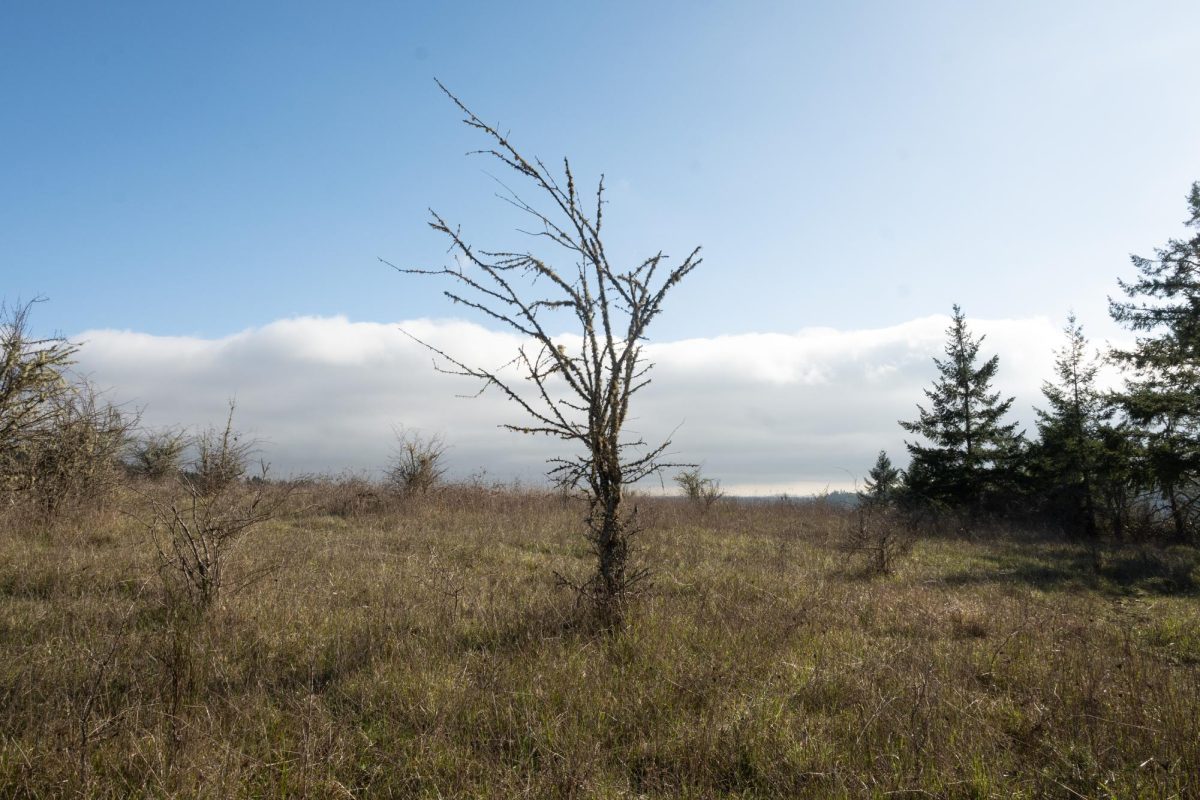A torrential rain floods the forest floor as heavy raindrops throw themselves through canopies of leafy limbs and thunder brews overhead, preparing to strike.
White lightning snakes through the charged air and locates an easy target. A violent crack reverberates through the drone of the downfall––a stately Douglas Fir has been hit. The lightning has split the trunk right through the heart, obliterating the uppermost branches. Its innards now scorched and smoking, the fir begins to die.
Over the course of its long life, the roots of the tree stretched deep into the stable ground below and, in death, allowed the tree to remain standing. When forest managers stumble upon it, it will be recognized as a snag, or a “standing dead tree.”
Perhaps the fir will never be discovered by humans, but the other inhabitants of the forest will certainly know it’s there. Over the coming seasons, the snag will become home to woodpeckers, a buffet for wood-hungry insects, a haven for hiding squirrels and a metropolis for lichens and mosses.
Snags are critical for the wildlife of the forest, but their impact reaches even further.
“Snags are important for carbon storage. They’re important when they fall down, they become logs and then they’re habitat elements on the ground that a lot of terrestrial organisms use. They play a role in nutrient cycling, there’s vertical structure, there’s all kinds of things that come from snags,” said Jim Rivers, an associate professor of wildlife ecology in the Oregon State University College of Forestry and recent author of a paper about snags and their ecological significance.
The paper, published in December, is the culmination of a 20-year experiment in how to create snags.
“(Oregon) has a lot of loss of natural snags in managed forests,” Rivers said. “There’s a couple of reasons for that.”
One of the primary reasons is that not many Oregon trees grow large enough and undergo death on a normal basis, such as old age, wildfires or lightning. Oregon produces a lot of timber, and once a tree gets to a point where it can be harvested, it will be cut down. This can create clear-cut forests, especially in Western Oregon, according to Rivers.
“We don’t have what we would consider to be the natural level of standing dead trees or snags,” Rivers said.
Twenty years ago, Rivers and a team of researchers found themselves in the Douglas Fir forests near Coos Bay, Oregon, armed with chainsaws and a fungal inoculant to investigate how snags can be created.
The fungal inoculant was inserted right into the core of the tree by climbers. Chainsaws were used to cut the tops of trees or cut a ring around the bottom to stop nutrients from the roots making it to the rest of the tree (called “girdling”). All of these methods have been used historically, though very few long-term studies of their consequences have been studied.
“Years ago, there were several studies that were using dynamite to blast the tops off the trees which sounds like a fun excuse to use dynamite,” Rivers said.
He added that the idea behind dynamite is to break the trees in a way that would resemble breakage that would happen under normal circumstances like in an ice storm.
After all the trees in the study had been treated and tagged, they were checked intermittently. Then, “you just let them do their thing,” Rivers said.
At the closure of two decades, a lot of data was available. Trees reacted differently to different treatments and so did their environments. Forest managers can now look at this data and decide what is best for the land they are managing, based on the forest, the wildlife and their goals.
Take a family forest owner for example. “Oftentimes they want to have some timber production, but they also want to have habitat elements for wildlife. So they might want to have a few trees that they’ll girdle, maybe they’ll girdle at different points in time so that there’s a continuous stream of habitat pieces that are used by different types of organisms that depend on standing dead trees,” Rivers said.
Even despite their best efforts to kill the trees involved in the experiment, those girdled or topped with a chainsaw saw low mortality.
“Most of them are standing and some of them have even grown in the time since that damage, so it’s just a reminder that trees are able to heal lots of wounds, even pretty serious wounds,” Rivers said.
Those wounds don’t just have to be chainsaw-inflicted. The fungal inoculant used on the trees can live up to 100 years. According to Rivers, this is likely why many of the trees inoculated with the fungus survived, the decay is a very slow process.
“Those two treatments, the mechanical damage and the (fungus) inoculation, I think we have a longer time frame to look at that would be really interesting,” Rivers said.













































































































